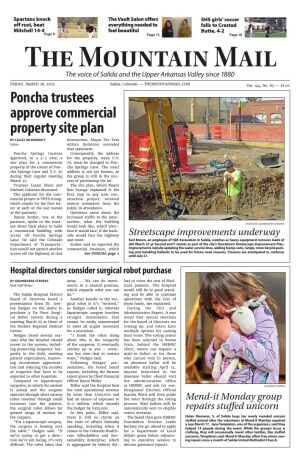In 2004, medical personnel at the Centers for Disease Control declared measles effectively eradicated. But in recent months, there has been an alarming resurgence of the disease, predominantly in unvaccinated children. It is comforting to note that, to date, Colorado state and county departments of health have reported no cases.
What is measles?
Measles is a viral disease that is characterized by a fever as high as 105 degrees Fahrenheit, fatigue, cough, runny nose, conjunctivitis and a rash. About a third of children younger than 5 and adults older than 20 develop complications that may include diarrhea, ear infections, croup and pneumonia. It is worth noting that in adults, infections in the brain (encephalitis) can result in permanent brain damage. Death occurs in 1 out of 1,000 of those who do develop serious complications.
Transmission: So how do I get measles?
Measles is transmitted by respiratory droplets through the air, not through physical contact. It can even be transmitted two hours after an infectious person has been in the room. About 90% of exposed people who are susceptible get the disease. The most infectious period is before the rash appears and in the first several days after the onset of the rash.
Resurgence: Why are we seeing a resurgence of measles?
The increase in measles cases is a direct result of the decrease in vaccination rates. In the previous 20 years, measles mostly occurred in isolated communities that did not believe in vaccination. Over the last two decades, however, more people are choosing not to vaccinate their children. This is the primary driver of the resurgence.
Treatment: Is there a treatment for measles?
Unfortunately, there is no specific treatment for the disease once it occurs. There are, however, medications available to help with the symptoms.
Vaccines: How do I avoid getting measles?
The measles vaccine, first available in 1963, usually confers lifelong immunity. It is given as a single shot in one of two ways. One way is to combine it with rubella (German measles) and mumps. This is called the MMR. The other way is to combine it with varicella (children pox). This is called MMRV. The vaccine is commonly given twice, once between ages 12 and 15 months and again between 4 and 6 years. It is available at Chaffee County Public Health and at many of the local medical clinics in the county. Your local doctor may have it available, but I would suggest checking first on availability.
Vaccine safety: Is this vaccine safe?
This is likely to be on people’s minds. The measles vaccine is completely safe. In the more than 50 years since the vaccine was developed, the most common side effects include a sore arm at the injection site, fever and a mild rash. Rare complications are just that: rare. About 1 in every 2,500 children develops a temporary fever-induced seizure.
There is no scientific evidence that autism is caused by the vaccine. Multiple scientific studies have looked at the data and agree there is no correlation. And, despite the recent advocacy by some alleged experts, there is no evidence of any correlation between vaccines and autism. And has been recently advocated, there is no evidence that eating certain foods will confer any immunity against measles.
German measles: Is it the same as “regular” measles?
German measles (rubella) is a milder viral disease with symptoms including rash, mild fever, headache, swollen glands and sore throat and runny nose.
Lydia S. Segal, MD, MPH, is a retired family practice doctor with public health training. She has previously written for The Mail and The Times on COVID during the pandemic. For any additional questions on measles or other health subjects you would like Segal to write about, email editor@themountainmail.com.




